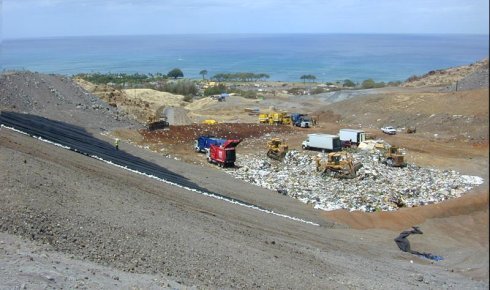Where Does Your Dumpster Go After Pickup?
During your construction or household project you may consider the materials you are disposing of. Brick, wood, drywall, concrete, roofing shingles, furniture, carpet; the list of possible debris are endless. But, have you ever considered where your dumpster goes once you are finished throwing away your debris? DumpsterSizes.com is here to inform you on the path your waste takes after it is hauled away.
Step One: Pickup Your Dumpster
The first step, though a bit obvious, is for a hauler to drive to your location to pick up your dumpster.
Step Two: Drive to a Transfer Station
The second step is for the hauler to drive to a transfer station. A transfer station is often referred to as a facility where waste is unloaded and temporally placed until reloaded onto other vehicles for shipment to landfills or other disposal facilities.
This is done so haulers do not have to drive long distances to the waste’s final destination. It can become a safety hazard for haulers and other drivers on the road if a hauler is driving with a dumpster that is overflowing with debris.
Most waste management trucks use bio-diesel to save money and reduce their carbon footprint. So driving to a transfer station instead of the final destination, will help reduce air pollution. In fact, diesel trucks that give off gas emissions are more of a health concern than the garbage and waste facilities.
Step Three: Off to a Landfill
Once your waste sits briefly at a transfer station it is then hauled to its final destination, a landfill. When trash is dumped in a landfill, it gets buried into the ground and covered with soil. However, some materials are placed into recycle bins.
Materials sent to a landfill are processed in various ways. For example, organic waste is composted when taken to a landfill. So waste like banana peels, coffee filters, egg shells and grass clippings can be deteriorated to use as a soil supplement for planting and fertilizing. A fun fact is that you can usually buy compost at your local landfill.
Trash can also go into an incinerator. It is then burned and turned into ash that can be used to make roads or parking lots. Incinerators can also create enough energy to power millions of homes.

So the next time a hauler picks up your dumpster and collects your waste, consider what they are doing for the environment. We rely on them to start a chain of events to recycle and create new sources of renewable energy. They are a vital part of an ecological cycle that protects our health and environment.
Tags: roll off dumpster,transfer station, landfill,